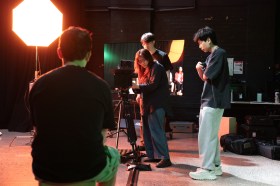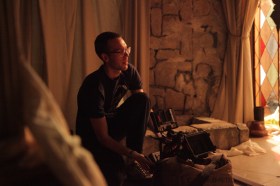In this article:
Despite years of initiatives and dozens of research reports on screen diversity, the lack of diversity in Australia’s screen industry remains a glaring issue. Whether it’s in front of the camera or behind the scenes, the representation of Australia’s richly diverse population is woefully inadequate.
It’s hard to escape the frustrating irony that an industry meant to reflect the stories and experiences of all Australians is still, in large part, failing to represent anyone outside of the traditional mould. For instance, when it comes to gender diversity in the industry men continue to dominate the workforce overall (80%) and progress more consistently into technical or creative leadership roles, contributing to a serious gender pay gap.
CALD under-representation
When it comes to culturally and linguistically diverse (CALD) populations, people from European and Anglo-Celtic backgrounds are over-represented, while people from Asian backgrounds are under-represented, and continue to face challenges around persistent stereotypes and tokenism, with their characters taking on the burden of representing a community that rarely sees itself on screen.
This is not a new issue. Diversity has been an ongoing discussion in Australia’s screen industry for years, yet meaningful change remains elusive. Why? Because the majority of current initiatives are short term, ad hoc and non-binding. Without being enshrined in legislation, these efforts have no teeth. Policy priorities shift with political winds, and diversity measures, as they stand, are vulnerable to being swept aside at any moment.
A new report that I co-authored with fellow Monash University academics, Incentivising Australian Screen Diversity: Proposal for a Diversity Tax Offset, Grant, or Minimum Industry Standards, paints a clear picture: current efforts are not enough, and Australia is falling behind international counterparts when it comes to promoting diversity on screen.
Read: Deakin University research shows taking risks can build diverse audiences
In order to truly make headway on a more diverse screen industry and culture, diversity needs to be not simply an option or an afterthought, but a fundamental requirement within the industry.
Mechanisms for screen diversity
Our report sets out four potential mechanisms: adopting diversity criteria as a minimum standard, providing grants for productions that meet diversity benchmarks, or introducing diversity criteria into existing producer tax offsets. Most critically, it calls for a media diversity tax offset that could give incentives for genuine representation both on screen and behind the scenes.
These measures aren’t merely theoretical; they’ve been tested abroad. The UK, Europe and the US have all embraced diversity initiatives such as minimum standards and funding bonuses. If Australia wants to stay competitive in the global media landscape, it must prioritise diversity.
Economic boost
This isn’t just about cultural capital. Enhanced diversity has economic benefits. It opens up opportunities for international collaborations, attracts a broader audience, and ensures the stories on our screens are as compelling and authentic as the communities they represent.
The path forward is clear: it’s time for real, legislative change. Diversity in Australia’s screen industry must stop being a “nice-to-have” and become a “must-have”. Only then will we truly see an industry that ensures that reflects our multicultural nation, and allows every Australian to see themselves reflected on screen.
Read the full report.






